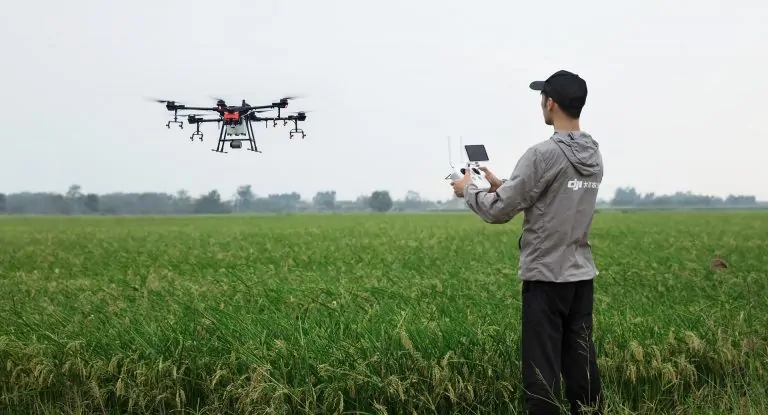Decision-making at the national level in both developing and developed countries requires the integrated use of Geographic Information Systems. Both local and national governments in many developed countries have found geographic information systems (GIS) to be a critical tool in resource management, regional planning, spatial planning, public health, land administration, location intelligence and economic development. Moreover, GIS plays a vital role in achieving Sustainable Development Goals (SDGs). Unfortunately, the practical use of GIS in many developing countries is hampered by the lack of awareness about the technology, lack of accurate and detailed spatial and demographic data, lack of trained personnel, lack of finances and corruption.
Lack of awareness about GIS
One of the main challenges is the lack of GIS awareness about the growth and robustness of the technology. It is one of the biggest barriers for people in developing countries who are looking to exploit technology to its fullest potential.

The lack of awareness and application of the GIS makes it difficult for people to embrace and use the technology. The solution to this is creating an awareness level in order to increase the use and implementation of the technology.
Data Limitations
Secondly, data limitation is another challenge faced by developing countries. Accessing and acquiring the right data is a challenge due to not fully embracing the new technology.
Converting paper maps and data into digital format is still a challenge. Finding the money to collect new data and convert paper maps and data into digital format continues to be a problem. In many cases, digital data does exist, but there are issues of confidentiality, accuracy, completeness and logical consistency.
Inadequate Trained Personnel
This is one of the major challenges in the field of GIS. Geospatial technology implementation requires a specialized skill set, understanding and knowledge.
The fact that GIS is a relatively new technology means that staff with GIS training and skills are on-demand and beyond the reach of most existing departmental budgets. Hands-on expertise should be there in order to endure the complexity of the problems to provide prompt and effective solutions. In addition, there should be some level of education and training for the public on the practice and use of geo-information.
Lack of Trained Manpower
Few people have got the skills to handle spatial data and put it into practice. According to technology providers, some of the challenges faced may include a lack of skilled labour being the main challenge followed by higher cost of training, lack of budget, system, lack of understanding and finally lack of awareness of the training. Training people will improve the skills needed in implementing GIS.
Inadequate Finances
Financial hardships in adopting GIS are also another challenge faced by developing countries. There is a shortage of computers, accessing both the hardware and the software. There is a lack of adequate funding for the collection of data needed since data is expensive. Moreover, insufficient funding has led to the lack of necessary hardware such as input devices, processing and storage devices, output devices and software to perform spatial processes. The cost of running and maintaining the technology is also costly in developing countries. This is a major problem in adopting the new technology and makes adoption of the technology a challenge.
Ownership of GIS Software
There are inadequate regulations to organize the bureaucracy in the procurement process and intellectual property rights. Most used GIS software typically originates from the United States or Europe. In some cases, this results in problems getting copies of the software as well as getting support for the software. If GIS was to be liberalized then various organizations can design the process, and make decisions about control and accountability for each layer, set of features in their databases, and tables in the databases.
These issues arise as it becomes clear to different units of the organization and country that data they previously regarded as their domain are going to be more easily shared and seen by other users. It is no secret that control of information is about the power within the set-up, so the introduction of a new way of organizing and sharing that information—the new GIS—will disrupt the existing lines of power within the organizations and government. A thorny issue comes when the questions about whose budget will be supporting GIS arise.
Today, we’re rising a rise in the adoption of Open Source GIS software (FOSS) by governments, institutions and corporations globally. This could be an opportunity to reach more users of GIS and interested parties in the sector.
Corruption
It would be an injustice to leave out corruption as a challenge in the adoption of GIS. Some of the decision-makers in a country do not understand GIS and its use thus a lower priority is given to the adoption of this new technology. The focus on selling GIS technology tends to get caught up in technical jargon and not in the fact that a GIS aids in the process of map-making, and that maps are much easier to understand than tables. The majority do not understand what GIS does and what it could achieve hence getting financial support continues to be a problem. The opportunity and financial resources that could be used in propelling the application of this technology are then shifted to other selfish uses, which definitely do not involve the development of the country.
In summary, local and national governments in many developed countries have found geographic information systems (GIS) to be a critical tool in resource management, regional planning, spatial planning, public health, land administration, location intelligence and economic development. However, the adoption of GIS has given rise to challenges such as data limitations, lack of awareness about GIS technology, inadequate finances in adopting GIS, lack of trained personnel, lack of trained manpower, incomplete ownership of GIS software and corruption. The adoption of technology promises certain benefits like increased efficiency and productivity. These challenges need to be addressed by both the users and the technology providers. Researchers have set potential solutions to break the barriers and to create potential opportunities for GIS development by providing open-source data and software. Open data potentially offers freely and easily usable spatial data. For example, the development of Open-Source GIS offers a set of rich software toolsets in many different fields that could contribute to efficiency and cost-effectiveness.
What else do you think is a hindrance to the adoption of GIS in developing countries?








GIS in Developing Countries